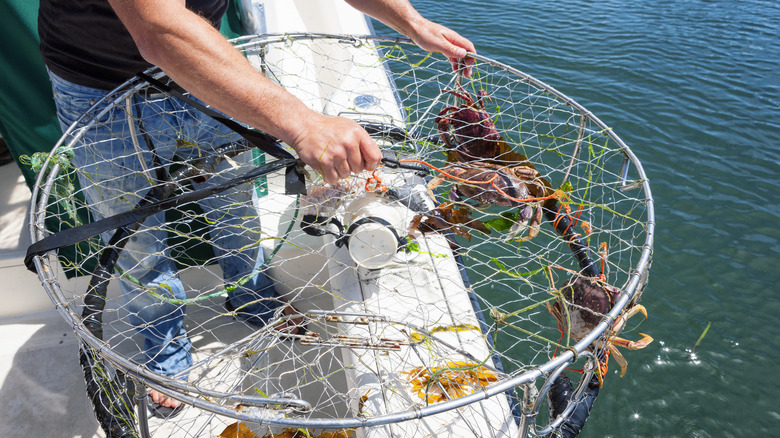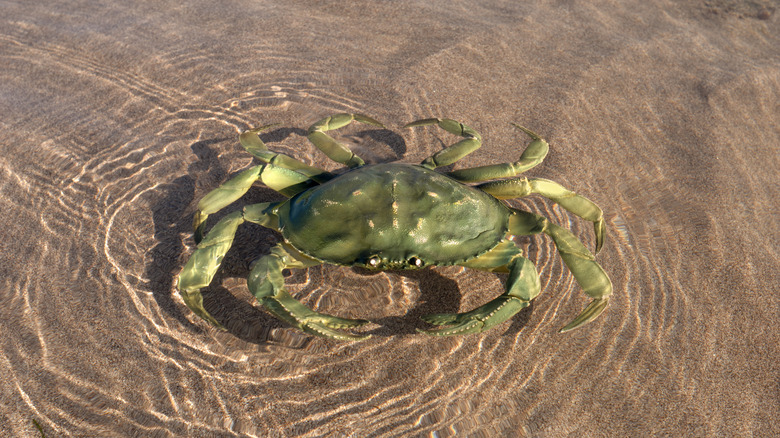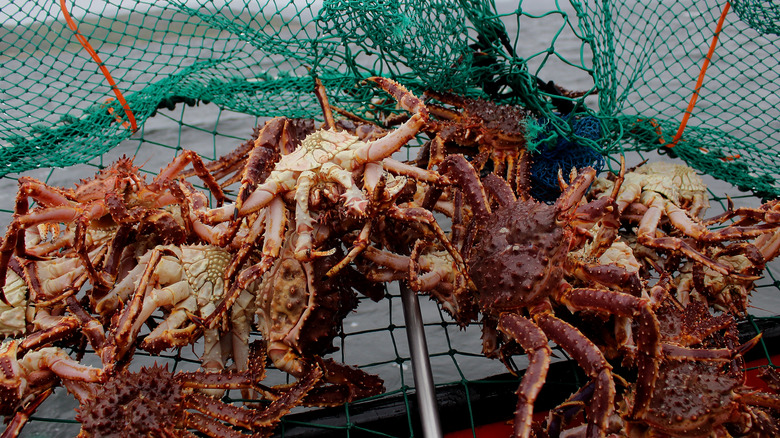What The Deadliest Catch Captains Do To Target The Right Kind Of Crab
In the treacherous waters of the Bering Sea, where the reality TV series "Deadliest Catch" takes place, the captains and crew of the fishing vessels perform one of the most dangerous tasks in the world — catching crab. They must endure choppy waters, cramped working conditions, long hours at sea, and some of the most harrowing and painful injuries reality TV has seen. All of this is driven by the high profitability of the specific crab species these fishermen seek. This is why the "Deadliest Catch" captains work tirelessly to target the right kind of crab.
The primary species targeted on "Deadliest Catch" are king crab and snow crab. To ensure their efforts yield their targeted species, the mariners on "Deadliest Catch" must possess and employ technological know-how, their experience, and keen intuition. Each successful expedition hinges on their ability to understand and adapt to the behavior and habit preference of various crab species, navigating both the sea's natural challenges and stringent regulatory requirements. So, what exactly do the Deadliest Catch captains do to target the right kind of crab? Read on to find out.
Different crab species prefer unique living conditions
Each crab species featured in "Deadliest Catch" thrives in unique environmental conditions, which the captains must consider when planning their expeditions. Knowing the prime fishing grounds for each type of crab will affect pot placement, which are the cages used to trap crabs. Strategic pot placement of crab pots is one of the factors that allows for selectivity when targeting crab species.
Red king crabs prefer colder deeper waters less than 40 degrees Fahrenheit. They are typically found on the ocean floor near the continental shelf. Blue king crabs, although similar to their red counterparts, are more localized, often inhabiting areas around St. Matthew Island and the Pribilof Islands. Since these species of crabs have pretty specific areas they inhabit, crab fishermen can target them relatively easily.
Snow crabs, on the other hand, often inhabit shallower, sandy, or muddy bottoms in the Bering Sea. They are more tolerant of varying water temperatures from 30 to 51 degrees Fahrenheit, allowing them to occupy a broader range of depths compared to king crabs. This variability can make it hard to place pots, which is why beyond a general understanding of crab habitats, crab fishermen also use GPS and detailed logs from previous fishing seasons to locate prime fishing grounds, according to one Redditor.
Different crab species have different bait preferences
Beyond their preferred habitats, different crab species display different behavioral tendencies. One such behavior that crab fishermen can exploit is the food preferences for each type of crab.
The choice of bait is another crucial factor in successfully attracting the right kind of crab. King crabs are known to be attracted to oily fish such as herring or cod. These fish release strong scents that travel through water, luring king crab into the pots. On the other hand, snow crabs respond better to other seafood like squid.
Captains often experiment with different bait combinations to determine the most effective mixture for the current conditions and specific crab species. They also may adjust the amount and placement of bait within the pots. This trial-and-error approach, combined with knowledge from past seasons, allows them to refine their strategies continually, increasing the likelihood for catching the specific crab they are targeting. This has become increasingly important as climate change has been taking a toll on "Deadliest Catch" by disrupting water currents and crab populations, which could be altering these creatures' characteristics beyond what we know so far.


